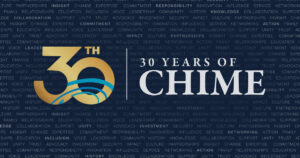It’s that time of year when you can find 2023 recaps and 2024 predictions everywhere you watch, listen to, or read content. In health IT, we are no exception to this. My StarBridge Advisors colleague, David Muntz, has written our final blog post of the year that health IT leaders may find useful – “12 Steps to Prepare for 2024 – Big Challenges – Bigger Opportunities”.
has written our final blog post of the year that health IT leaders may find useful – “12 Steps to Prepare for 2024 – Big Challenges – Bigger Opportunities”.
David is one of the kindest people I know. It is a true pleasure to have been on this StarBridge venture with him for the past 7 years and to have known him far longer than that from when we were CIO colleagues. It is no surprise that he starts his post by talking about how important it is to model kindness, mercy, and compassion in all that we do. He notes the workforce challenges that organizations face and the importance of recognizing that healthcare is a people business. He goes on to address specific opportunities in DEI, digital health, AI, security, and much more.
He closes with a call to make the best of these opportunities in 2024 to improve health and care in our communities, our nation, and our world. After all that is our common goal! I encourage you to add his blog post to your end of year reading list.
All the best to you in 2024! May it be a healthy, peaceful year filled with kindness.







